
Valley of Genius: The Uncensored History of Silicon Valley (As Told by the Hackers, Founders, and Freaks Who Made It Boom)
by
Adam Fisher
Published 9 Jul 2018
Apple couldn’t deal with this thing. Marc Porat: So there were two projects established: General Magic on the outside, and Newton on the inside. Andy Hertzfeld: The Newton project was an 8-by-11 tablet that was supposed to cost $5,000. Marc Porat: The Newton was a hedge in a big strategy that we had described to Sculley. Andy Hertzfeld: Basically Marc convinced John Sculley to not only let us spin out from Apple but also to help us convince Sony and Motorola that they should join Apple in trying to create this new standard. We called it “the Alliance.” Marc Porat: Apple, Motorola, Sony: So now we had the three board members as licensees, who were the core of the founding partners.
…
Steve Perlman: He was showing what looked like a little wallet—a block of plastic wrapped in leather. Marc Porat: Everything was going to become very small and in your hand, and intimate and jewelry-like. You’d wear it all the time, and if there was a fire in your house you’d think, Family goes first, and then I grab my Pocket Crystal. Megan Smith: Pocket Crystal—that was his nickname for it. Andy Hertzfeld: The first thing I said when I saw his models was, “Well, they’re not realistic.” And he said, “I know—but they will be.” Michael Stern: Marc Porat was an incredible visionary. His Pocket Crystal project at Apple was really a previsioning of everything that we now take for granted.
…
We had that working twenty-some years before the iPhone, in a better way than most people have it now. Steve Jarrett: You’ve got to remember, this was before even digital cellular existed. Marc Porat: Many of us had analog cell phones, which were bricks, and some of us carried batteries in a little, tiny briefcase to go with the brick. Steve Jarrett: People were just using mobile phones to talk. So, it’s very, very early. Marc Porat: The theory and the strategy, right from the beginning, was to create a global standard. Apple and Microsoft would have the personal computer, IBM and Digital would have the bigger hardware, and we would do everything else.
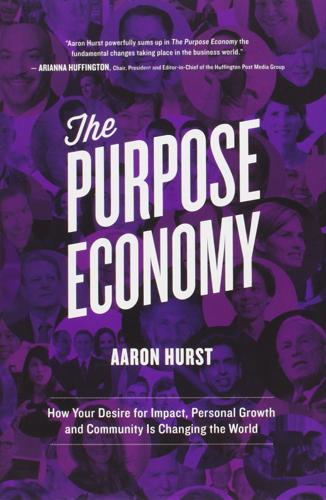
The Purpose Economy: How Your Desire for Impact, Personal Growth and Community Is Changing the World
by
Aaron Hurst
Published 31 Aug 2013
You need to understand which segment of the adoption curve is next and then meet their needs and remove their barriers. Sadly, my uncle, Marc Porat, was at the center of one of the greatest cautionary tales about ignoring the social science of innovation. The first iPhone was released on June 29, 2007. What very few people know is that the first real iPhone was first developed 17 years earlier, and while Steve Jobs was off working on other ventures. In 1990, then-Apple executive Marc Porat convinced John Scully that the next generation of computing would require a partnership of computers, communications, and consumer electronics.
…
Christine Hershey, Markus Hipp, Jeff Hirsch, Elizabeth Horwitz, Rachel Hutchinson, Robert Hunter, Shawn Hunter, Noah Isaacs, Luciana Jaburl, Amel Karboul, Meghana Khandekar, Steve Kirmse, Aïcha Konaté, Adriana Krasniansky, Bobby Kuber, Adam Lashinsky, Tracy Lawrence, Chelsea LeMar, Stephanie Lepp, Leonardo Letelier, Julie Lewit-Nirenberg, Josh Linkner, Emily Loose, Christos Makridis, Elaine Mason, David B. McGinty, Denise McMahan, Jeff Nedler, Mark Newall, Frances Nguyen, Joy Nuga, Alexandria Ocasio-Cortez, McVal Osborne, Kelli Peterson, Eric Phillips-Horst, Armin Pialek, Marc Porat, Damon Shelby Porter, Julian Posada, Camille Preston, Tom and Kathy Raffa, Eric Ries, Fabio Rosati, Jeff Russell, Mark Russell, Alexandra Santiago, Frank Santoni, David Sasson, Nina Schneider, Elizabeth Schwan-Rosenwald, Jimena Ryan, Emily Sarver, Steve Schloss, Ryan Scott, Meaghan Scribner, Mariana Serra, Neil Shah, Shally Shanker, Dr.
…
It was in businesses like Etsy, who became wildly successful. It was in models and new markets for things like car sharing, and at the core of the rise and success of social media. It was why so many people were deciding to leave their jobs and work for themselves. It was during this time that I came across a summary of my uncle Marc Porat’s work from when he was a doctoral student in economics at Stanford. In his 1977 thesis, he coined the term “Information Economy,” and he proved that information had surpassed industry as the leading driver of the U.S. gross domestic product (GDP). In reading the summary of his dissertation, I found something surprisingly similar about what he had described and what I was witnessing both through my work at Taproot and in the economy at large.

Build: An Unorthodox Guide to Making Things Worth Making
by
Tony Fadell
Published 2 May 2022
Few people know about the first. In 1989, an Apple employee and intellectual visionary named Marc Porat drew this: Fig. 1.0.1 Marc’s 1989 sketch of the Pocket Crystal in his big red notebook. On the next page he wrote, “This is a very personal object. It must be beautiful. It must offer the kind of personal satisfaction that a fine piece of jewelry brings. It will have a perceived value even when it’s not being used. It should offer the comfort of a touchstone, the tactile satisfaction of a seashell, the enchantment of a crystal.” Marc Porat/Spellbound Productions II The Pocket Crystal was a beautiful touchscreen mobile computer that combined a cell phone and fax machine, that let you play games and watch movies and buy plane tickets from anywhere.
…
Luckily, I tested negative and we hired some amazing people. Then we got to work negotiating with General Magic to get a version of their operating system (OS) that would do what we needed. I knew the code, knew we could make it work. But by that point General Magic was sinking fast. No revenue, no customers, lots of panic. Marc Porat had made many promises to many people and they were all coming up empty. After months of struggling to squeeze an OS out of General Magic, I got the call: Tony, we just can’t do it. Sorry! I was left with a job title, a budding team, a budget, and a mission we believed in, but no operating system and half a year down the drain.
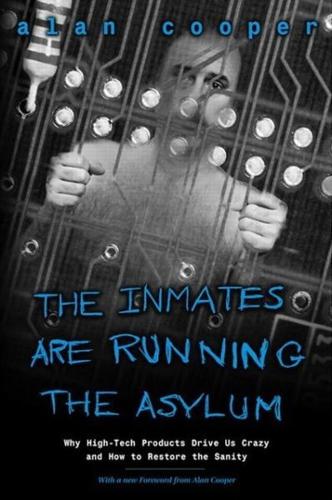
The Inmates Are Running the Asylum
by
Alan Cooper
Published 24 Feb 2004
In the next section, I'll show that simple but almost universal flaws in our process for creating software-based products are causing this proliferation of unpleasant, undesirable, dancing-bearware products. Driving from the Backseat An article[1] about the spectacular failure of high-tech startup company General Magic is revealing. The author innocently touches on the root cause of the product's lack of success when she says that Marc Porat, the president, "launched his engineering team to design the device of their dreams." There is no irony in her statement. It seems perfectly natural for the engineering team to do the designing, yet that is precisely the cause of the problem. Later in the article, she quotes one of the engineers as saying, "We never knew what we were building.
…
I listened in amazement, knowing that the odds would be severely stacked against him. Who but history could second-guess an engineering talent as towering as Andy's? There is no doubt that the product General Magic had in mind was, and still is, extremely desirable. There is no doubt that its technology was superb. There is no doubt that Marc Porat's ability to establish strategic partnerships and make business deals was second to none. There is no doubt that the company was well sired and well funded. So what caused its demise? I offer interaction design, or a lack of it, as the smoking gun. Despite its stellar pedigree and awesome talent, General Magic's product was engineered and not designed.
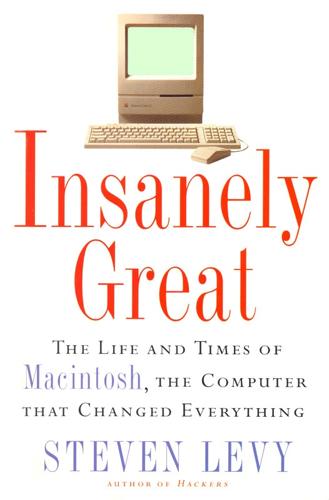
Insanely Great: The Life and Times of Macintosh, the Computer That Changed Everything
by
Steven Levy
Published 2 Feb 1994
Next to his cubicle is Hertzfeld, the inspiration to the young hackers on staff Also in the room are Susan Kare, the original Macintosh artist; Dan Winkler, author of HyperTalk; and Bruce Leak, the key wizard behind Macintosh QuickTime. Joanna Hoffman, hired by Jef Raskin as a marketing person when only four people worked on Macintosh, is General Magic's vice president of sales and marketing. Even the communications director has a pedigree-she's John Sculley's former publicist. General Magic began when Marc Porat, a former Stanford MBA working at Apple, came up with a product idea called Pocket Crystal-a personal communications device that would not only combine the functions of telephone, fax, electronic mail, but perform the tasks of a digital Filofax, and, finally, be a conduit to various databases and even, eventually, financial accounting systems.
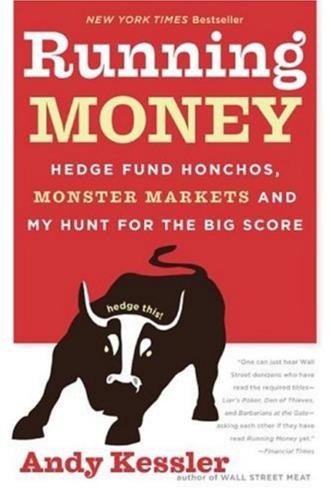
Running Money
by
Andy Kessler
Published 4 Jun 2007
He wasn’t saying much, but we wrangled a meeting and got a glimpse of his plans for a service that used voice recognition to pull up information in real time. It seemed modestly interesting if they could get it to work. The company had $2.50 per share in cash, and we bought a million shares for not much more than $1. Not overnight—it probably took three or four months to get all the shares through Goldman Sachs. I think we were buying the shares of Marc Porat, one of the founders. As other investors starting hearing about 98 Running Money General Magic’s new service, the stock started trading close to $2, still less than the cash in the bank. In our first 12 months, we managed to scrape up barely $20 million in capital—how lame. But thanks to NetApp and Pinnacle and General Magic, we turned it into $25 million, a 25% gain.
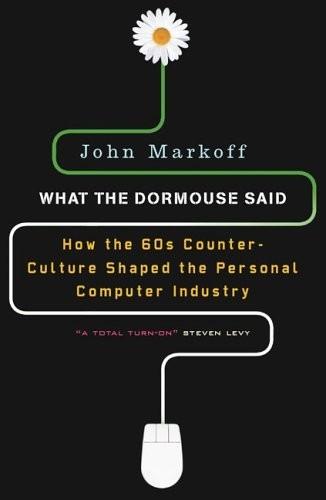
What the Dormouse Said: How the Sixties Counterculture Shaped the Personal Computer Industry
by
John Markoff
Published 1 Jan 2005
The main office was moved to El Camino Real in Menlo Park, just up the street from Kepler’s, and doubled as an arts-and-crafts store and a print shop. The Free U attracted people from the entire community, ranging from the professors at SAIL to Palo Alto High School students. One of the first to join was a young Israeli named Marc Porat, whose father had been a refugee from the Nazis and had come to Stanford to get his Ph.D. Although his father had arranged for him to get into a good college after he graduated, Porat had already been radicalized. In high school, he realized that something was wrong about the Vietnam War after a group of his classmates who were star athletes joined the Marines and were all killed within a year.

The Code: Silicon Valley and the Remaking of America
by
Margaret O'Mara
Published 8 Jul 2019
Ruth Porat’s brother Marc was also the author of a first-of-its-kind 1977 Commerce Department study of the information economy (part of which originated as his Stanford PhD thesis): Marc Uri Porat and Michael Rogers Rubin, The Information Economy, U.S. Department of Commerce, Office of Telecommunications (1977). On General Magic, the company Marc Porat founded and many of whose employees went on to play seminal roles in the development of Apple’s iPhone and Google’s Android, see Sarah Kerruish, Matt Maude, and Michael Stern, General Magic: The Movie (Palo Alto, Calif.: Spellbound Productions, 2018). 29. Michael Siconolfi, “Under Pressure: At Morgan Stanley, Analysts Were Urged to Soften Harsh Views,” The Wall Street Journal, July 14, 1992, A1. 30.

The Rise of the Network Society
by
Manuel Castells
Published 31 Aug 1996
If the explanation of productivity growth introduced by the aggregate production function school is not substantially different from the results of historical analysis of the relationship between technology and economic growth over longer periods, at least for the industrial economy, does this mean that there is nothing new about the “informational” economy? Are we simply observing the mature stage of the industrial economic system whose steady accumulation of productive capacity frees labor from direct material production for the benefit of information-processing activities, as it was suggested in the pioneering work of Marc Porat?14 Table 2.1 Productivity rate: growth rates of output per worker (average annual percentage change by period) Source: Historical Statistics of the United States: Colonial Times to 1970, Part 1, Series F10–16 a Initial year for period 1870–1913 is 1871. b Initial year for 1950–60 is 1953. c Initial year for 1950–60 is 1954.